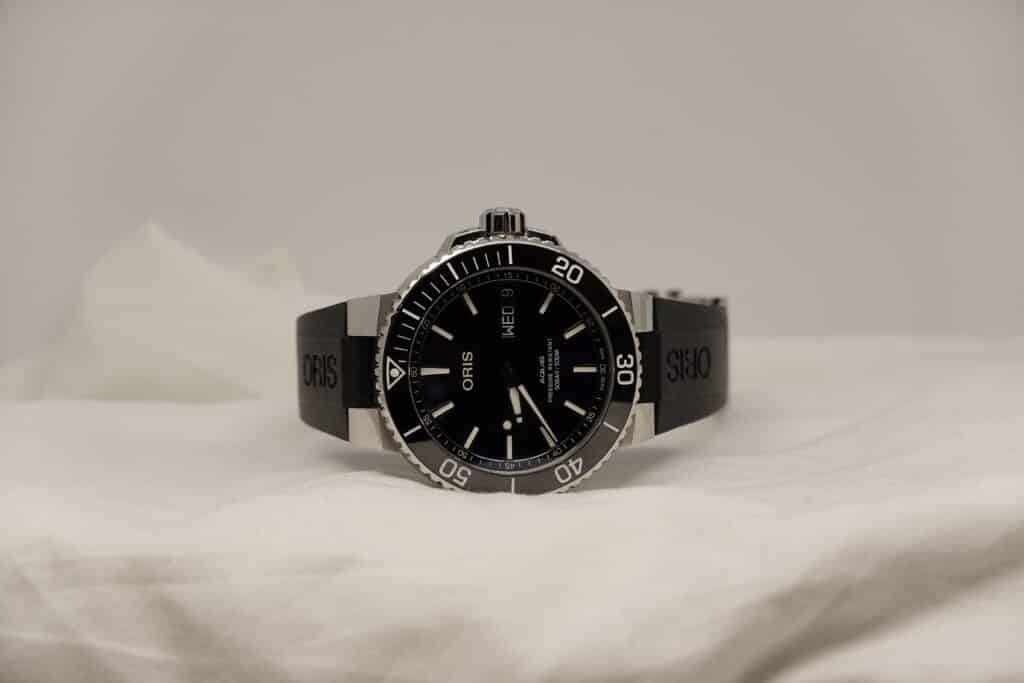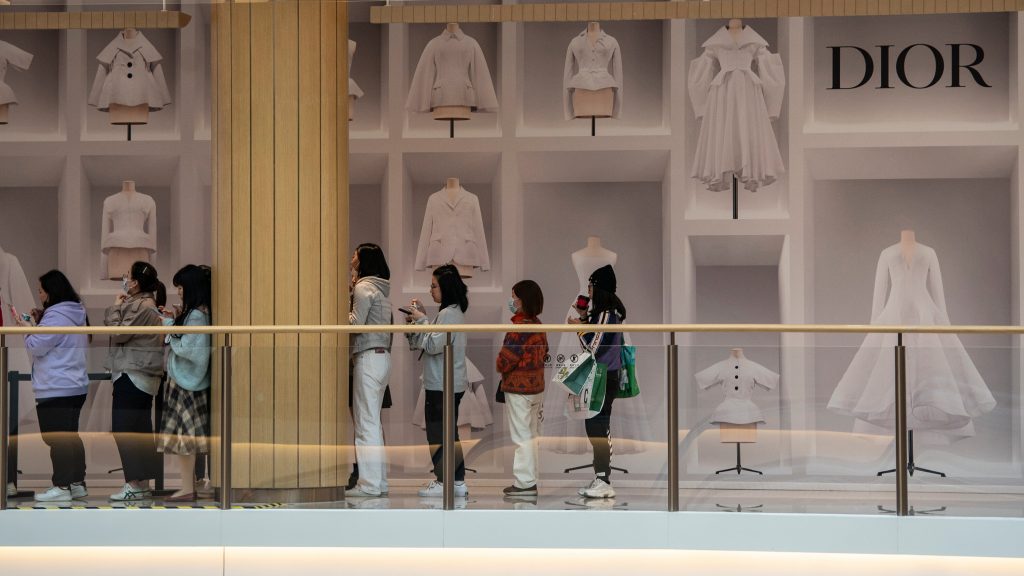France & Italy luxury retail heavily impacted by the ban on American tourists
Americans are important customers for European luxury brands, especially in the crucial summer months, given the majority of American tourists come between May and August. Two-thirds of luxury sales in Europe are driven by tourists, analysts estimate, starting with the Chinese and often followed by the Americans, at least when the dollar is strong, as it was in 2019. Prior to Covid-19, there had been “a resurgence of American spenders in Europe, largely reflecting the appreciation of the dollar versus the euro”, says Thomas Chauvet, luxury goods analyst at Citi, citing a price gap of 20 to 30 per cent on average at current exchange rates. France’s shopping districts will be hit especially hard. In 2019, 2.3 million Americans visited Paris, the biggest tourist group by nation, making up 18 per cent of foreign travellers. In 2010, the figure was 1.3 million, according to Paris’s Visitors Bureau.
When they come, they shop: high-net-worth Americans spend €180,000 per year when they travel abroad, slightly less than high-net-worth Chinese consumer spend of €197,000, according to shopping tax refund company Global Blue. Americans represented 14 per cent of tax-free shopping in France, and 11 per cent of tax-free shopping in the fashion sector in Italy in 2019, per Global Blue. Wealthy American shoppers tend to be older than other nations, with more than half aged over 55 years, the biggest demographic, followed by those aged 35 to 54 years, who spend on soft luxury items like handbags and shoes.
“It’s a big loss of income,” says Corinne Menegaux, Paris’s Visitors Bureau managing director. The loss of American clientele combined with the loss of Chinese tourists “might lead to a more structural shift in demand patterns away from Europe”, Chauvet says, especially given the price gap between Europe and China has narrowed significantly.
Indeed, the pandemic is adding to shifts in shopping habits that will lead to more far-reaching change. “Structurally, the business of luxury is becoming more local in nature,” says Erwan Rambourg, global co-head of consumer and retail research at HSBC, citing a shift that will inevitably lead to store closures in Europe. “You’ll have this pandemic, currency fluctuations, political events, regulation changing. If you work well with local consumers, that will enable you to offset the pain. It’s an overall approach that the industry needs to have. Tourism flows are the cherry on the cake, not the cake. So you shouldn’t blindly count on them.”
The European Union hasn’t lifted travel restrictions for tourists from the United States, where the virus continues to accelerate in such major states as California and Florida. The US counts 5,000,000 total cases, with 162,000 deaths and the Department of State advises US citizens to avoid all international travel due to the global impact of Covid-19. On top of that, the fear factor of travelling is likely to impact tourism in Europe for some time.
Not even luxury conglomerates are immune, according to Rambourg. Last year, 70 per cent of Gucci parent Kering’s European sales came from tourism — a peak, chief financial officer Jean-Marc Duplaix told investors on 28 July. “It’s down to regulations. If Americans are unable to come to Europe, luxury companies will have nowhere to hide, and no means to compensate for lost sales,” says Rambourg, noting that local purchases in Europe are buoyant now. “But if you have one-third of your business that’s buoyant and two-thirds missing, there’s not a lot you can do.”
Paris is particularly hard hi. Hermès chief executive Axel Dumas said that the French capital is more impacted than the house’s provincial stores despite good business with Parisians. “In Europe, the share of the local customers is up, but it doesn’t make up for the loss of tourists,” he told investors on 30 July. Hermès Europe sales fell 61 per cent in the second quarter.
Some brands are likely to be more hard-hit than others as customer shopping preferences change. “A Chinese buyer who has moved on from this Covid-19 crisis will probably favour exuberant, colourful, joyful brands such as Gucci, while Western Europeans and Americans, who might be more influenced by a guilt factor when purchasing luxury right now, will prefer more understated brands, with discrete patterns, logo and colours, like Bottega Veneta,” Rambourg says.
Brands favoured by American shoppers are potentially more exposed to a sharp decline in sales. Popular brands among Americans pre-pandemic include Louis Vuitton, Gucci, Chanel, Prada and Hermès, the Vogue Business Index survey shows. Saint Laurent, too, is particularly exposed. “The sexy and slightly ostentatious aesthetic of Anthony Vaccarello appeals mostly to an American clientele,” says Institut Français de la Mode professor Benjamin Simmenauer. In the second quarter, Saint Laurent revenue contracted 48 per cent on a comparable basis, marking the worst performance of parent group Kering’s divisions, reflecting the house’s exposure to Western Europe and North America.
The absence of tourists has also led them to refocus on their Parisian clientele by offering new services such as same-day delivery where you only pay for pieces you keep.
Digital investment, while hurting margins, is paying off long-term for others. Tom Greyhound, another Parisian concept store where the American clientele usually represents around 30 per cent of the sales, now offers free shipping, increased availability to approximately 70 per cent of the store’s assortment (from 40 per cent before Covid-19 hit), greater online range with categories from Loewe, Dries Van Noten and Jil Sander, and additional product shots they styled and shot in the Marais. Chief executive David Kang says the investment is “significant” but worthwhile: US online sales are ahead around 30 per cent compared with last year.
Saint-Tropez has been working on attracting a wider range of nationalities to reduce its reliance on Americans, who were 40 per cent of the total clientele a decade ago. “It’s a volatile clientele that is very sensitive to the currency and economic factors and risk-averse,” says Claude Maniscalco, general manager of the Saint-Tropez tourist office. He recalled that the American clientele disappeared after the attacks in France in 2015 and 2016. “We’re doing well this summer, including in luxury boutiques, even though we won’t make up for what has been lost in the spring,” he says, noting the lines in front of the luxury houses boutiques such as Dior, Louis Vuitton and Chanel. (The French represent 60 per cent of the Saint-Tropez clientele this summer, with the remainder Europeans from Swiss, Luxemburg and Belgium. Last summer, 85 per cent of the clientele was international.)
Meanwhile, capturing growth in the US will require investment by luxury brands, particularly in their distribution network, including refurbishment, relocations and store closures, suggests Chauvet. Brands should consider exiting low-quality wholesale doors, boosting e-commerce infrastructure and customer service, offering targeted marketing campaigns, better customer relationship management tools, local events, people (on the shop floor and back-end functions) and fine-tuning of pricing architecture.
“Most brands in the US market, especially in the luxury sector, are focused on investing in and improving their digital and logistics capabilities,” says Doug Stephens, founder of Retail Prophet, a consultancy firm. He added that pop-ups in these enclaves would certainly come more into play, “but only once the US begins to better manage the effects of the pandemic”.
“The best thing that European luxury brands can offer US consumers is productive and entertaining forms of distraction and a sense of community,” Stephens says. “People in many parts of the US, particularly those markets with high-income consumers, are feeling isolated and somewhat cut off from society. Brands can step in to fill that void and offer people experiences that bridge the gap.”
The largest brands are showing resilience stateside, despite the challenging environment. On 27 July, LVMH chief financial officer Jean-Jacques Guiony described the recovery that took place in June in the US for Louis Vuitton and Dior as “very pleasing” with the former being “flattish” and the latter being “quite positive”.
Down the road, luxury brands will likely need to lighten their retail footprint in Europe. “On average I think you’ll see a few stores being shut in Europe, some being opened in Asia, notably China and the US store count could be stable,” says Rambourg, who recommends being opportunistic. “If your lease is up, you might get out of the space that a few months back you thought you’d stay forever.” Chauvet, who doesn’t expect Europe to return to pre-covid levels before 2022 or 2023, agrees: “Luxury conglomerates will have to think about optimising their store footprint. We expect a number of permanent closures in tourist-led destinations such as Paris, Milan and London.”
Nathalie Razafine, head of the national high street team at commercial real estate company Cushman & Wakefield says brands are adopting a “wait-and-see attitude. However, we see pressure on rental values — down 10 to 30 per cent depending on the location — and some brands who were about to sign leases are postponing their commitment to the fourth quarter.”
To be sure, she anticipates changes in the prime areas in the coming months as “luxury brands position themselves to seize iconic locations at a better price. Brands will still need flagship stores to communicate.”
This crisis will drastically change retail, according to Stephens. “Covid-19 has proven that stores are an impractical means of product distribution that can be easily disrupted. With that in mind, I expect to see stores designed much more as galleries and experiential play zones where consumers can be entertained, inspired and acquired by brands, who then work to capture the lifetime value of those consumers online.”
The American travel ban to Europe is additional pressure for luxury brands who rely on their summer holiday spending. Reaching them at home requires heavy investment and innovation, something smaller brands are finding harder amid a lack of cash. But savvy brands are having success by investing in their digital offering and pivoting towards local consumers. Further out, brands need to reconsider their reliance on tourists in European capitals and rebalance their store portfolios to meet the changing customer base domestically and pivot towards the Asian consumer.
Credit article: CCP Luxury


